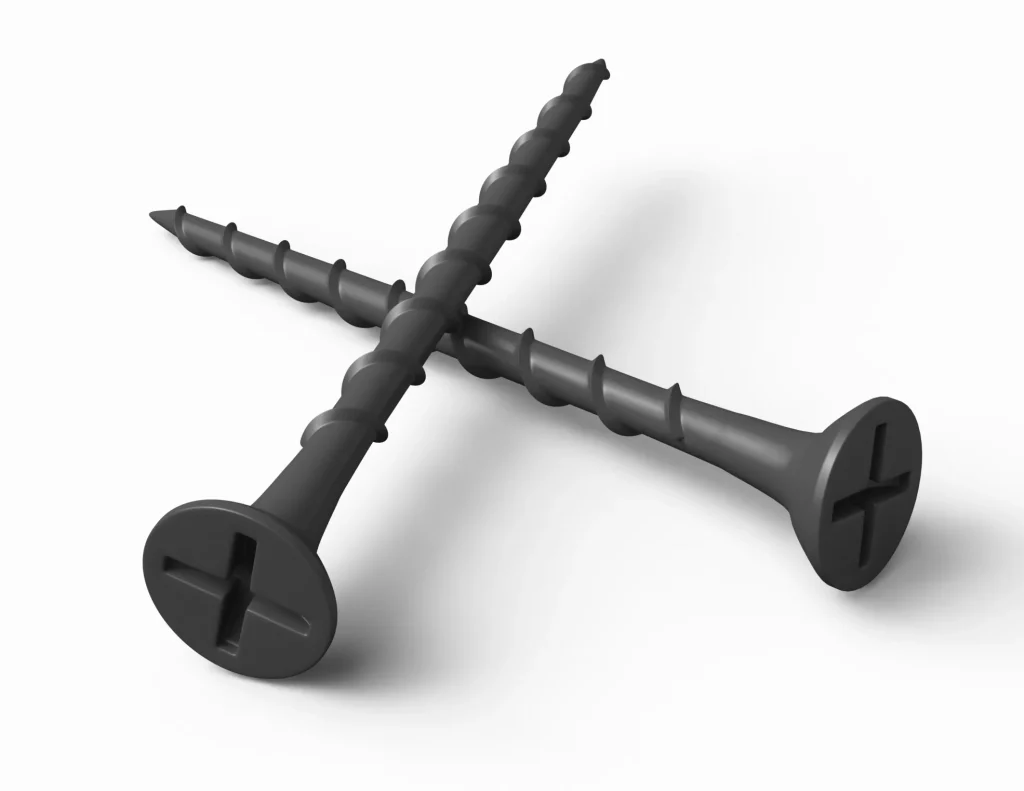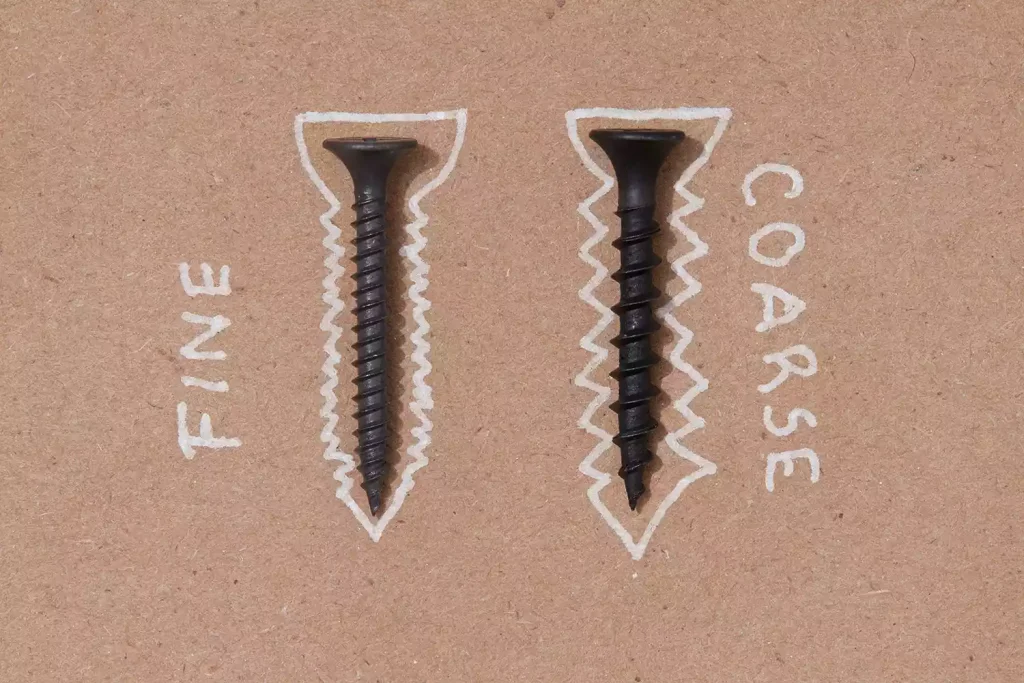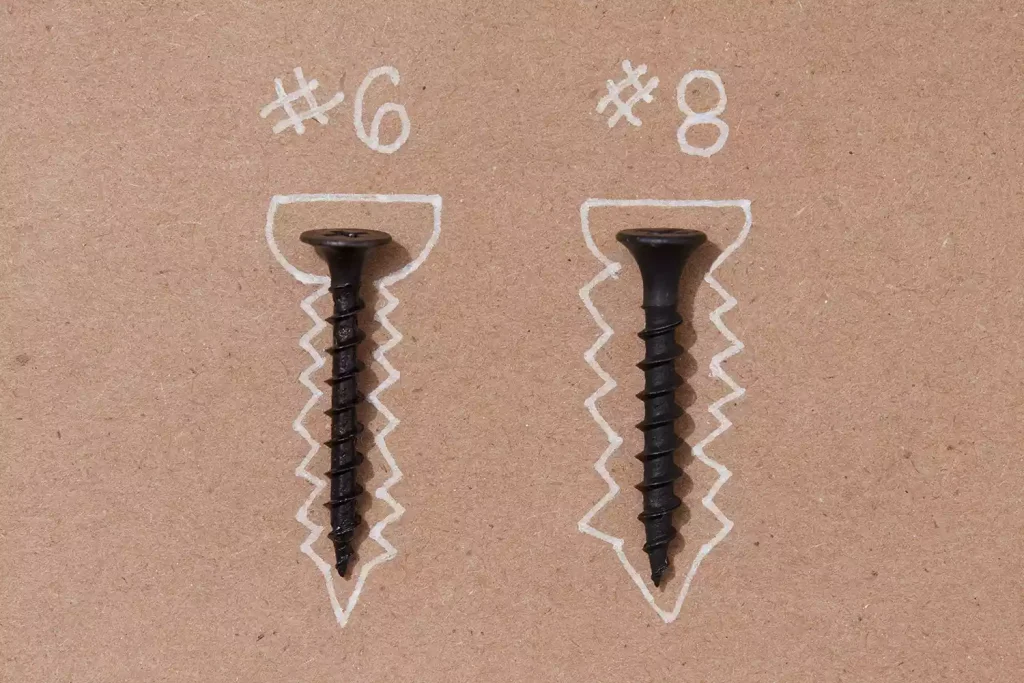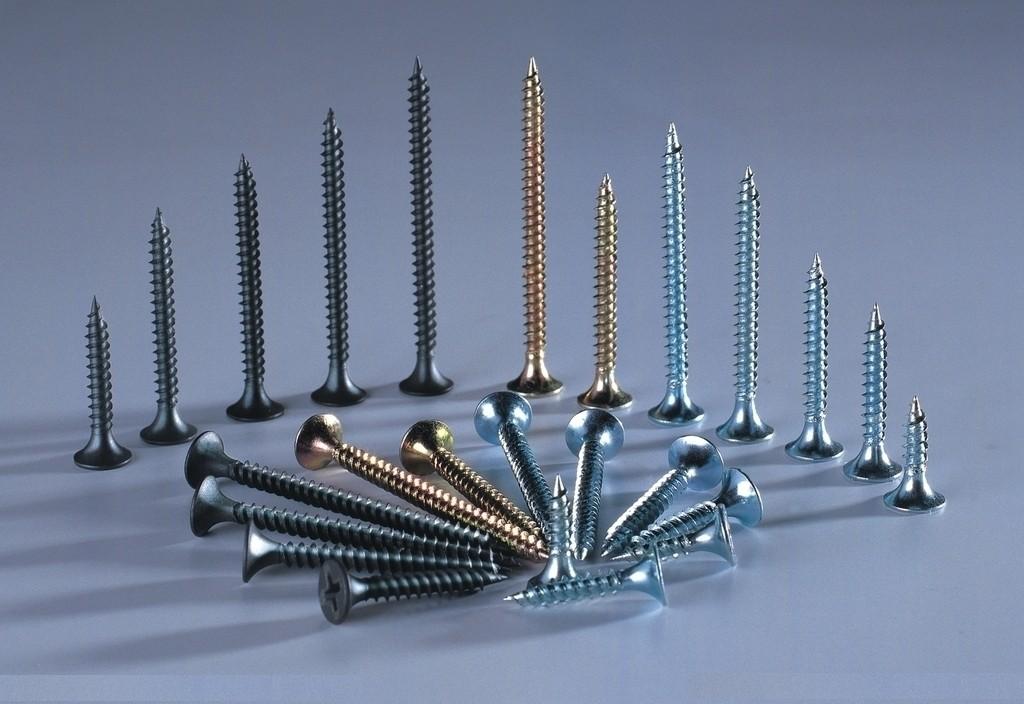Drywall screw has become the standard fastener for securing full or partial sheets of drywall to wall studs or ceiling joists. Drywall screws’ lengths and gauges, thread types, heads, points, and composition at first might seem incomprehensible. But within the area of do-it-yourself home improvement, this vast range of choices narrows down to just a few well-defined picks that work within the limited types of uses encountered by most homeowners. Even having a good handle on just the three main features of drywall screws will help drywall screw length, gauge, and thread.
Drywall Screw Lengths

Screws intended for construction generally range from 1 inch to 8 inches long. The reason is that building materials can have a wide range of thicknesses: from sheet metal to four-by-four posts and even thicker. Not so with drywall.
Most drywall installed in homes is 1/2-inch thick. Thickness can sometimes increase or decrease, but only by very little and not very often. About the only time that do-it-yourselfers will need to install thicker drywall is with fire code or type-x drywall. At 5/8-inch, type-x drywall is slightly thicker to retard the spread of flames and is used in garages and walls adjacent to furnace rooms.
Drywall that is 1/4-inch thick is sometimes used as facing for walls and ceilings. Because it is flexible, it can be used to form curves. Still, the majority of drywall installed by do-it-yourselfers in kitchens, bathrooms, and general areas will be 1/2-inch thick.
1/4-inch drywall: Use 1-inch to 1 1/4-inch drywall screws
1/2-inch drywall: Use 1 1/4-inch or 1 5/8-inch drywall screws
5/8-inch drywall: Use 1 5/8-inch or 2-inch drywall screws
Drywall Screw Threads

Coarse Thread Drywall Screws
Use coarse-thread drywall screws for most wood studs.
Coarse-thread drywall screws work best for most applications involving drywall and wood studs. The wide threads are good at gripping into the wood and pulling the drywall against the studs.
One downside of the coarse-thread screws: the metal burrs that can embed in your fingers. Be sure to wear gloves when working with coarse-thread drywall screws.
Fine Thread Drywall Screws
Fine-thread drywall screws are self-threading, so they work well for metal studs.
Fine-thread drywall screws are best for installing drywall to metal studs. Coarse threads have a tendency to chew through the metal, never gaining proper traction. Fine threads work well with metal because they are self-threading.
Fine-thread drywall screws do not hold as well in wood as do coarse-thread screws.
Drywall Screw Gauges

Gauge refers to the diameter of the drywall screw. In most cases, you will be using either #6 or #8 drywall screws. Keep in mind that as gauge numbers increase, the screw becomes larger in diameter. So, a #6 drywall screw would be thinner than a #8 drywall screw. While this may seem evident, many materials related to home construction work in the opposite direction. For example, smaller numbers of sandpaper grits are actually coarser than grits with higher numbers.
Actual sizes of drywall screw gauges:
Gauge is often expressed as the second number after the length. For example, a 1 5/8-inch long screw with a #6 gauge would be shown as: “1 5/8 inch x 6.”
#6 (0.1380-inch)
#8 (0.1640-inch)
Drywall Screw Uses

The main purpose for drywall screws is securing full sheets of drywall (usually 4-foot by 8-foot for do-it-yourselfers) or partial sheets of drywall to either wood or metal studs.
Drywall screws are good for repairing nail pops. If you have an older house and find walls that have mysterious circular bumps, then you have what is called nail-pops.
Before drywall screws came into widespread use, drywall was nailed into place with short, wide-head nails. While drywall nails are still around and do have their use as a quick way to fasten wallboard, drywall screws have evolved as the standard method of attaching drywall to studs precisely because of the nail-pop problem.
Some do-it-yourselfers use drywall screws for one unintended purpose: building projects. Drywall screws tend to be brittle. Rather than bending, they can snap. Drywall screw heads are especially prone to cleanly breaking off, leaving the shaft section embedded in your wood. No screw extractor can remove a headless screw.
Few woodworkers would ever use drywall screws for fine building. Avoidance of drywall screws is especially important with heavy or even moderate building tasks, critically with outdoor projects like fences and decks. But drywall screws can be used for light building projects or for temporary construction when safety is not a factor.
How Many Drywall Screws Per Pound?

Estimating how many drywall screws to buy can be frustrating because you’ll need to drive a set number of screws for the project, yet drywall screws are often sold by weight. Quantity is never guaranteed when screws are sold per pound, but there are close estimates:
1-5/8-inch coarse thread #6 screws: about 200 screws
1-1/4-inch coarse thread #6 screws: about 238 screws
2-1/2-inch coarse thread #8 screws: about 92 screws
06
How to Drive Drywall Screws
As a do-it-yourselfer or any type of casual drywall installer, you will not need a dedicated drywall screw gun. A drywall screw gun is a specialty tool used for hanging drywall. It is a more compact, lighter, and lower torque tool than most cordless drills. While screw guns do an excellent job of driving drywall screws, they have such limited functionality for homeowners that it is unnecessary to purchase them.
Adjust Torque: If your cordless drill does not have an adjustable speed and a clutch so that you can vary torque, then you will need to purchase one with these features. The ability to lower torque with the clutch prevents you from stripping the screw head, a problem otherwise known as camming out.
Pierce the Paper: Pierce the drywall paper with the sharp point of the screw. Place the drill-driver bit on the screw and turn on the drill.
Draw in the Screw: Let the screw draw itself into the drywall and stud. About three-quarters of the way through, you will need to exert more force. If not, the head will come out.
Stop When Flush: Stop when the head and paper are even with each other.
Sink: Then apply another quarter- or half-turn to the screw to cause it to sink just below the paper, without tearing the paper.
07
of 08
Which Type of Drywall Screw to Use?

For most work involving 1/2-inch drywall on installed on wood studs, the phosphate coated, coarse thread 1 1/4-inch or 1 5/8-inch drywall screw does a reliable job.
This screw is inexpensive and can be purchased in large tubs since drywall work requires a multitude of fasteners. The 1 5/8-inch drywall screw can be difficult to sink since so much shaft remains after the first 1/2-inch of the drywall thickness is covered. Stepping back on length means easier driving but it also does mean reducing holding strength.
Since the last 1/8-inch of sink is critical (where the bugle head of the screw needs to crease but not tear the outer paper layer), this shorter screw makes it easier to calibrate that last 1/8-inch of the drive.
For hanging drywall on ceilings, you may want to go with the longer drywall screw. For hanging drywall on walls, you can use either the long or short drywall screw.
Drywall Screw Terminology and Features
Bugle head: Bugle head refers to the cone-like shape of the screw head. This shape helps the screw stay in place, without tearing all the way through the outer paper layer.
Sharp point: Some drywall screws specify that they have a sharp point. The point makes it easier to stab the screw into the drywall paper and get the screw started.
Drill-driver: For most drywall screws, you will generally use a #2 Phillips head drill-driver bit. While many construction screws have begun to adopt Torx, square, or heads other than Phillips, most drywall screws still use the Phillips head.
Coatings: Black drywall screws have a phosphate coating to resist corrosion. A different type of drywall screw has a thin vinyl coating that makes them even more corrosion-resistant. Additionally, they are easier to draw in because the shanks are slippery.





